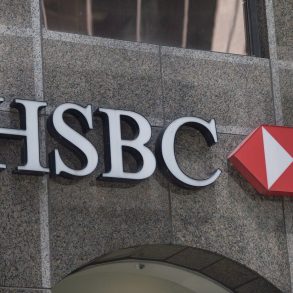Fear gave way to hope in financial markets this week. That led traders to look past recent European downgrades and push Canada’s 5-year yield to a 6-week high.
The 5-year government bond (which typically leads fixed mortgage rates) ended the week at almost 1.40%, up 13 basis points.
(Click to enlarge)
Yields have had every opportunity to make new lows this year. Yet, despite distress in Europe and mixed economic messages domestically, they’ve held strong.
Lenders will watch bonds in earnest next week to see if the trend continues. A meaningful break above 1.50% on the 5-year yield could halt or reverse the rate reductions we’ve seen in the last 10 days.
Looking further out, uncertainty is as great as ever. But that doesn’t stop analysts from crystal balling. Below is a sampling of rate expectations currently making the rounds:
- TD’s Craig Alexander told CTV: “I don’t see (mortgage) rates coming lower than they are today (without) a banking crisis in Europe…”Interest rates are about as low as they can possibly go at this point.”
- RBC’s Eric Lascelles agrees, telling CTV News “You’re now getting down to levels that are astonishingly low, at least in the underlying government bond yield—which is really the benchmark that banks are setting their mortgage rates off of. Those rates will struggle to go much lower. There is a negative real return.”
- Traders are making “massive allocation shifts (out of bonds),” Sheldon Dong (vice president of fixed-income strategy at TD Waterhouse Canada) told the Wall Street Journal. (That’s often bullish for yields, at least in the short term)
- There’s also growing talk that the great bond bull market is getting long in the tooth. Today’s yields are breathtakingly low because traders have felt like “the world was coming to an end,” investment strategist Harvey Rowen told MarketWatch. “One could argue that U.S. Treasury yields (which are correlated to Canadian yields) probably won’t go much lower, if at all, but they can stay surprisingly low for longer than most people predict, especially while the euro overhang persists.”
Rob McLister, CMT








Anyone buying bonds at 1.40% when inflation is 2.3% is a nutbar. Bonds are so overbought it’s disturbing. Don’t be surprised by 100 BPS higher yields by December.
I don’t think so.
If that yield level is sustained, look for the 2.99% 4/5-year fixed rate promotions to be removed quite quickly, with possibly “quick-closing” discounts being removed as well.
I think that quick closes will still remain but obviously the discounts won’t be as great if the trend continues. With all of the volatility the only way to be competitive without potentially getting burned (ie yields skyrocket) is to offer 30-60 day quick closes.
Personally, I think that bonds won’t go much higher in the short term.
The 5y GOC should break 2.50% by Friday. Get your rates locked in people.
I’m lucky to have a mortgage rate of prime-0.75%, with 3.5 yrs left. I’m putting down an additional 25% with my accelerated bi-weeky payments. I’ll make an annual contribution as well if I can. My current strategy is to pay down principle (over 500K).
But if I renew in 3.5 years, I may not get a sub-prime variable rate. Right now I could lock in at 3.99% for 10 years. (I’m not looking at 5 years, it’s not worth it considering my current rate).
It’s tough to walk away from such a great rate (2.25% right now!), but there’s the long-term security aspect. I’m not overly sensitive to rate fluctuations, but with such a large mortgage, I would lock in before rates got out of control.
The prime rate has averaged 4.2% over the last 10 years. Does it make sense to lock in?
It’s unfortunate that there isn’t more competition with the 10 year rates. Look at what the American’s can get!
Why would you pay 1% more to know your rate after five years? That privilege will cost you $23,700 on a $500k mortgage! It’s not worth it. Most people are better off in a 3% five year fixed than a 4% ten year fixed.
yea but pal they will know how much they pay for the next decade..who knows where rates will be in five years….
I’m looking 5-10 years out… when the whole world will hopefully be repaying all this debt!
2.99% isn’t bad for the next 5 years, but would it be better than prime-0.75%? Maybe, but I’d still have to refinance in 5 years!
The average prime rate was only 4.2% over the last 10 years… but what was it the 10 years before that? Around 7% from 1992-2002? And from 1982-1992 it was probably closer to 10%!
The Euro debt crises could keep rates low for a while though… maybe a year?
Not so fast everyone… yields are down again today, as of right now, 6.14% to 1.33. Also, the Fed in the States has just announced that they will not raise rates until LATE 2014! Would love to know what Rob thinks of this news…
Yes, knowing that the prime rate probably won’t change for another 2.5 yrs is great for variable rate holders.
I was thinking my sub-prime rate of 2.25% might not last to the end of the year… but now if I can hold onto that for 2.5 years, it probably makes more sense to pay down principle.
I may not be able to lock in at such a low rate in the future, but I can save A LOT of interest over the next couple years!
Anywhere near 3% is incredible for 5 years. Prime – .75 sounds great today but I have a feeling people will be kicking themselves in 2 years for not locking in.
I don’t think it makes sense (for me) to lock for 5 years, given that the US Federal Reserve is unlikely to raise rates until at least 2014.
That said, in 2 years (or so) I could very well be kicking myself for not locking in for 10 yrs!